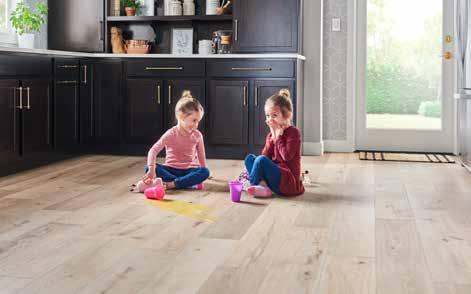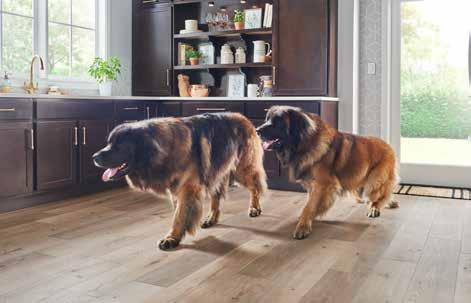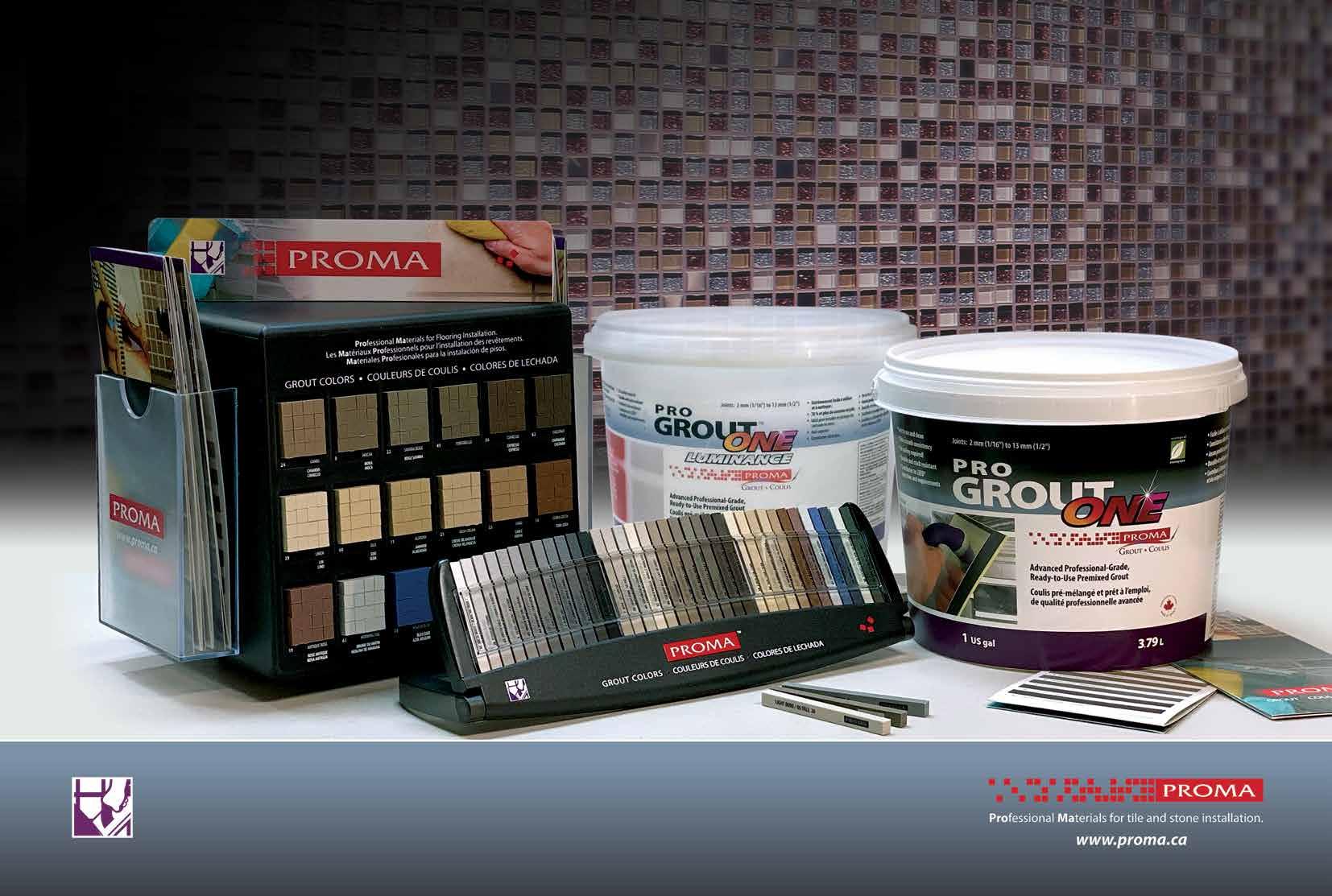
4 minute read
Water World
Installing laminate floors in rooms that get wet
By Dan Natkin
Advertisement
Laminate is one of the most affordable and versatile types of flooring for residential and commercial spaces as it is designed to emulate the appearance of real wood, tile or stone; provides superior performance benefits; and is offered in a wide variety of colours, textures and styles. When installed properly, it can go in nearly any room, including those where it traditionally would not have been installed. However, even with all these positive attributes, there are preconceived notions regarding laminate flooring that should be dispelled before discussing installation in wet areas.
Create a watertight seal around the entire perimeter of the installation using flexible 100 per cent silicone sealant.
Fact: Laminate is actually very durable. It is constructed of thick layers that are resistant to everyday wear and tear, standing up to everything from high heel shoes to pets’ nails to children’s toys. But all laminate is not created equal. A good indicator of quality is the NALFA (North American Laminate Flooring Association) symbol. NALFA certified laminates are third-party verified for extreme durability and stain, wear and even moisture resistance. Myth: Laminate is expensive. Fact: Laminate is one of the most affordable flooring options on the market, especially when compared to the total installed costs of carpet, ceramic tile and hardwood. Myth: Laminate looks cheap. Fact: Digital print and embossed-inregister technology have allowed laminate design to soar. Today’s laminate floors take on incredibly realistic wood and tile visuals to the point where it can be challenging to
tell the difference between real hardwood and laminate. Myth: Laminate is just another word for luxury vinyl tile (LVT). Fact: LVT and laminate are constructed very differently. LVT has a vinyl core, while laminate has a wood-fibre core, which actually makes it more sustainable and environmentally friendly. And most of the laminate flooring sold in North America is manufactured in North America. The same cannot be said about LVT. Myth: Laminate is not suitable for wet areas in the home. Fact: In recent years, incredible advancements have been made in moisture resistance technologies for laminate flooring. Many laminates now have improved surface moisture resistance to place the product on par with or better than LVT. Again, to ensure a quality product, look for laminate flooring that has been certified to the NALFA moisture resistance standard.
INSTALLATION BEST PRACTICES
Now that the myths about laminate flooring have been dispelled, it’s time to discuss installation in wet areas of the home, such as laundry rooms, kitchens and bathrooms. There are six best practices to follow.
To begin, ensure the subfloor is clean, flat and dry with no history of subfloor moisture issues. If there is evidence of subfloor moisture, seal the subfloor with a high-quality moisture vapour barrier.
Next, always use a high-quality, threein-one underlayment. Look for NALFA certified underlayments specifically designed for use with laminate flooring. These will provide comfort underfoot, moisture protection and sound absorption. If the flooring already has an attached pad, use a plastic poly sheet vapour barrier below the flooring that is a minimum of 0.15 millimetres (six mil).
Seal all cut edges of the planks with a high-quality, 100 per cent silicone sealant. This will protect any exposed core. Many manufacturers also offer a site applied sealant.
Ideally, use a compressible foam backer rod in all expansion spaces and then cover with silicone. This will provide added protection from surface-based moisture.
Finally, create a watertight seal around


\\ In recent years, incredible advancements have been made in moisture resistance technologies for laminate flooring. Many laminates now have improved surface moisture resistance to place the product on par with or better than luxury vinyl tile.
the entire perimeter of the installation using flexible 100 per cent silicone sealant. Do not use an acrylic sealant; only silicone will suffice. Install trim pieces and seal the areas with additional silicone sealant. Apply the sealant at all connections to door frames and other fixed objects, too.
Once complete, clean up spills in a reasonable amount of time. Refer to the manufacturer’s warranty for further specifics.
While laminate with moisture protection will stand up to what consumers want most — resistance to common, everyday spills and surface moisture — it is not designed to withstand traumatic flooding. Like all floors, water will always find the path of least resistance and in nearly 100 per cent of true flooding cases, the flooring will need to be replaced whether it was marketed as waterproof or not.
Dan Natkin is vice-president of hardwood and laminate at Mannington Mills. He has more than 20 years of industry experience and currently serves as president of the North American Laminate Flooring Association.
PRO GROUT ONE and PRO GROUT ONE LUMINANCE are advanced professional-grade, ready-to-use premixed grouts that deliver bright and superior color consistency combined with excellent stain resistance. They can also be used to install mosaic tile sheets up to 300 x 300 mm (12" x 12") on floors and walls. Contact PROMA toll-free at 1.866.51.PROMA (77662) or visit www.proma.ca to order a PROMA grout color card, kit or inquire about a countertop display.

ONEGrout for All of Your Needs.









